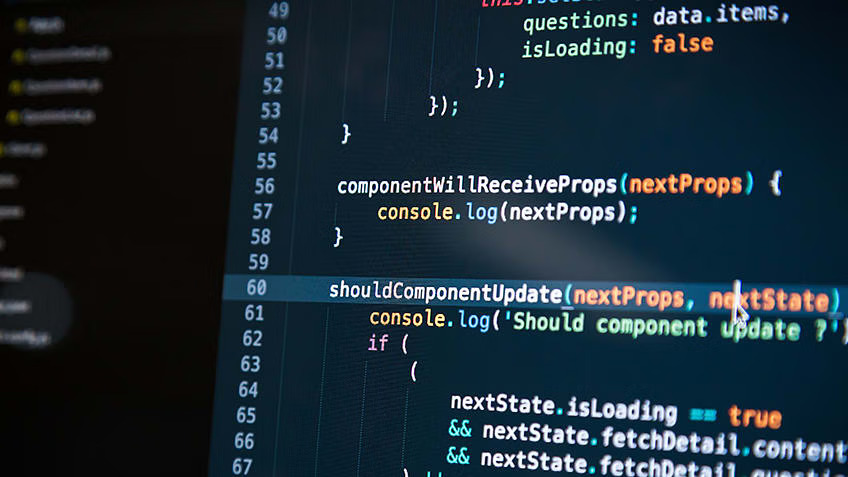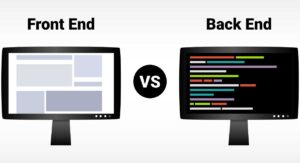In the ever-evolving web development landscape, React has emerged as one of the most sought-after skills for software developers. Whether you’re a seasoned professional or just starting, preparing for a React-related software developer interview requires a thorough understanding of fundamental and advanced concepts. This blog provides a comprehensive guide to the React interview questions you might encounter, from basic principles to more complex topics like React components, React Router, and ReactJS styling. By familiarizing yourself with these questions and their answers, you can demonstrate your expertise and confidence during your next interview.
It also shares a web development program that gives aspiring developers practical training in React and much more.
Basic React Interview Questions and Answers
- What is React?
React is a JavaScript library developed by Facebook for building user interfaces, particularly single-page applications. It allows developers to create large web applications that update and render efficiently in response to data changes. React’s main feature is its use of a virtual DOM, which optimizes rendering performance.
- What are the main features of React?
- Virtual DOM: Enhances performance by minimizing direct manipulation of the actual DOM.
- JSX: A syntax extension that allows mixing HTML with JavaScript.
- Components: Building blocks of a React application that encapsulate logic and UI.
- Unidirectional Data Flow: Ensures predictable data management through one-way data binding.
- Explain the difference between state and props.
- State: A built-in React object that stores component-specific data that may change over time. The state is managed within the component (mutable).
- Props: Short for properties, props are read-only data passed from parent to child components. Props communicate between components and are immutable within the child component.
Also Read: DevOps Tool Guide: What Is Maven?
- What is JSX?
JSX stands for JavaScript XML. It is a syntax extension that allows HTML elements to be written directly within JavaScript code. JSX improves the readability and maintenance of the code by combining the rendering logic and UI structure in a single place.
- What are React hooks?
Introduced in React 16.8, hooks are functions that let you use state and other React features in functional components. The most commonly used hooks are:
- useState: For managing state.
- useEffect: For side effects like data fetching, subscriptions, or manually changing the DOM.
- useContext: This is used to access the React context without wrapping the component in a context consumer.
Also Read: Web Development Tips: Code Review Best Practices
Interview Questions and Answers on React Components
- What are React components?
Components are the building blocks of a React application. They are reusable pieces of code that represent a part of the UI. Components can be either class-based or functional.
- Explain the difference between functional and class components.
- Functional Components: Simplified components written as JavaScript functions. They do not have state or lifecycle methods by default but can use hooks to manage state and side effects.
- Class Components: ES6 classes that extend from React.Component. They have state and lifecycle methods for managing component behavior over its lifecycle.
- What is the purpose of the constructor in a React component?
The constructor in a React component is used to initialize state and bind event handlers. It is called before the component is mounted. In a class component, it is defined with super(props) to ensure the component is correctly initialized.
- What are lifecycle methods?
Lifecycle methods are hooks in class components that allow developers to run code at specific points in a component’s lifecycle. Key lifecycle methods include:
- componentDidMount: Called after the component is mounted to the DOM.
- componentDidUpdate: Called after the component’s state or props have changed.
- componentWillUnmount: Called just before the component is unmounted and destroyed.
- How do you handle events in React?
Events in React are handled similarly to those in vanilla JavaScript but with some syntactic differences. Event handlers in React are written in camelCase (e.g., onClick instead of onclick), and you pass the function reference rather than a string.
Example:
JSX
Copy code
<button onClick={this.handleClick}>Click Me</button>
- What is the use of the key prop in React?
The key prop uniquely identifies elements in an array or list. It helps React optimize rendering by tracking changes, additions, and deletions to the list items.
Also Read: What is Code Review? Definition, Importance, Types, and Tips
React Router-related Questions and Answers
- What is React Router?
React Router is a standard library for routing in React. It enables the navigation among different views of various components in a React application, allowing for a dynamic and responsive user interface.
- Explain the difference between <Router>, <Route>, and <Switch>.
- <Router>: The main component that wraps the entire application and enables routing.
- <Route>: Used to define a route and its corresponding component. It renders the component when the URL matches the path.
- <Switch>: Renders the first child <Route> that matches the current location. It is used to group <Route>s and ensures that only one route is rendered.
- How do you programmatically navigate using React Router?
You can use the useHistory hook in functional components or this.props.history in class components to programmatically navigate to a different route.
Example using useHistory:
JSX
Copy code
import { useHistory } from ‘react-router-dom’;
function MyComponent() {
let history = useHistory();
const handleClick = () => {
history.push(‘/new-route’);
};
return <button onClick={handleClick}>Go to New Route</button>;
}
- How do you pass parameters to a route in React Router?
Parameters can be passed via the URL and accessed using the useParams hook in functional components or this.props.match.params in class components.
Example:
JSX
Copy code
<Route path=”/user/:id” component={User} />
In the User component, you can access the id parameter:
JSX
Copy code
import { useParams } from ‘react-router-dom’;
function User() {
let { id } = useParams();
return <div>User ID: {id}</div>;
}
Also Read: What is Test-Driven Development, and Why is It Important?
ReactJS Styling Questions and Answers
- What are the different ways to style React components?
There are several ways to style React components, including:
- CSS Stylesheets: Importing and using traditional CSS files.
- Inline Styles: Applying styles directly to elements using the style attribute.
- CSS Modules: Using modular and scoped CSS files to avoid style conflicts.
- Styled Components: A library for writing CSS-in-JS, allowing you to style components using JavaScript.
- How do you apply inline styles in React?
Inline styles in React are specified as an objects with camelCase property names.
Example:
JSX
Copy code
const divStyle = {
color: ‘blue’,
backgroundColor: ‘lightgray’
};
function MyComponent() {
return <div style={divStyle}>Styled with Inline Styles</div>;
}
- What are CSS Modules, and how do you use them in React?
CSS Modules are CSS files where all class and animation names are scoped locally by default. This prevents conflicts with other styles in the application.
To use CSS Modules:
- Create a CSS file with the .module.css extension.
- Import the CSS file in your React component.
- Apply styles using the imported object.
Example:
JSX
Copy code
import styles from ‘./MyComponent.module.css’;
function MyComponent() {
return <div className={styles.myClass}>Styled with CSS Modules</div>;
}
- How do you use styled-components in React?
Styled-components is a library for writing CSS-in-JS. It allows you to create styled components with scoped styles.
Example:
JSX
Copy code
import styled from ‘styled-components’;
const Button = styled.button`
background: blue;
color: white;
padding: 10px;
border: none;
border-radius: 5px;
`;
function MyComponent() {
return <Button>Styled with Styled-components</Button>;
}
Also Read: What is White Box Testing? Definition, Types, Features, and Benefits
Develop Skills to Ace React Interview Questions and Answers
Preparing for a React-related software developer interview involves mastering various topics, from basic concepts and component lifecycle methods to more advanced subjects like React Router and styling techniques. By understanding the questions and answers outlined in this guide, you’ll be better equipped to showcase your knowledge and skills during the interview process.
Gaining the right knowledge and skills before preparing for a React interview is essential. You can gain hands-on skills through a comprehensive online full stack web development bootcamp. Remember, the key to success is knowing the right answers and demonstrating a deep understanding of how React works and how it can be used to build efficient and scalable web applications.
You might also like to read:
The 10 Best Software Testing Tools in 2024
System Testing in Software Testing: Definition, Types, and Tips
Unlocking the Power of Collaboration with Version Control and Git
Clean Code Principles: Enhancing Software Quality and Maintainability






